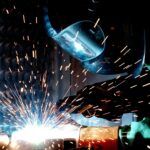The Commission has tabled a proposal to protect the EU steel sector from the unfair effects of global overcapacity, a vital step to ensure the long-term viability of a strategically crucial industry. Fulfilling the commitments set out in the EU Action Plan for Steel and Metal, the proposal maintains the principle of open trade and reinforces engagement with global partners to tackle overcapacity, by:
- limiting duty free import volumes to 18.3 million tonnes per year (a 47% reduction compared to 2024 steel quotas),
- doubling the level of quota margin duties to 50% (compared to 25% under the safeguard) and
- strengthen the traceability of steel markets by introducing a smelting and dumping requirement to prevent circumvention.
European Commission President Ursula von der Leyen said: “A strong and decarbonised steel sector is vital for the competitiveness, economic security and strategic autonomy of the European Union. Global overcapacity is damaging our industry. We need to act now, I urge the Council and Parliament to move swiftly. The Commission will continue to work with industry to protect and create good jobs, and with Member States and global partners, including at WTO level, to find long-term solutions to shared challenges”.
The proposal will replace the steel safeguard measure that is due to expire in June 2026. It responds to the call from EU workers, industry, several Member States, Members of the European Parliament and stakeholders to provide strong and permanent protection for the EU steel industry, with a view to safeguarding EU jobs and supporting the sector in its decarbonisation efforts.
Steel overcapacity is a global problem that requires strong, genuine and joint action by all partners. The Commission will continue to lead international work on finding collective solutions to effectively address the root causes of global overcapacity, including in the framework of the Global Forum on Steel Overcapacity. With the proposed action, the Commission invites like-minded countries to work together to insulate their economies from global overcapacity, while securing supply chains and increasing mutual market access.
The proposed measure is fully WTO-compliant. Following a mandate from the Council, the Commission will rapidly engage with the EU’s trading partners concerned in the framework of the GATT Article XXVIII procedure on this modification of EU tariffs in the WTO, with a view to providing them with country-specific allocations.
In view of the close and unique integration into the EU internal market under the EEA Agreement, exports from Norway, Iceland and Liechtenstein will not be subject to tariff quotas or duties. Separately, the interests of a candidate country facing an exceptional and immediate security situation, such as Ukraine, should also be taken into account when deciding on quota allocations, without undermining the effectiveness of the measure.
Next steps
The Commission’s proposal will now be subject to the ordinary legislative procedure and it will be up to the European Parliament and the Council to agree on the final regulation.
The Council decision authorising the opening of negotiations will require the adoption of a qualified majority in the Council.
Once adopted by Council and Parliament, the measure will replace the EU steel safeguard when it expires in June 2026. By presenting today, the Commission wants to ensure continued protection of the EU steel sector.
Background
Steel is an essential material for the EU economy, also for its ecological transition, due to its use in a large number of strategically important sectors, including defence. The EU steel industry is the third largest steel producer in the world. It directly employs some 300,000 people and indirectly supports some 2.5 million jobs, with steel production sites in more than 20 EU Member States. Steel plants underpin many regional economies, underlining their socio-economic and political importance.
The EU steel industry is currently facing significant pressure due to unsustainable levels of global overcapacity, which is more than five times the EU’s annual steel consumption (currently 620 million tonnes and projected to increase to 721 million tonnes by 2027). This increase in overcapacity, rising steel imports and the closure of third country markets add to the internal challenges facing the EU steel industry. These include increased trade restrictive measures in third countries, high energy and manufacturing costs in the EU and lower domestic demand. These challenges unduly weaken the EU industry’s competitiveness in a global market, undermining the industry’s ability to invest especially in decarbonisation and threatening its long-term viability.
The EU steel industry is the only major region to have lost some 65 million tonnes of capacity since 2007. In 2024, the capacity utilisation rate reached 67% [healthy rates are around 80%] and between 9,000 and 100,000 jobs have been lost since 2007. The sector recorded record losses in 2024.
In light of these critical challenges, the Commission announced its intention to prepare a new steel measure in its March 2025 Steel and Metals Action Plan (SMAP), and President Von der Leyen reiterated the EU’s commitment to protect its steel industry in her State of the European Union address (SOTEU).
The proposed measure is based on an economic analysis, including an assessment of the potential impacts of various options, as well as on information gathered through a targeted consultation of sectoral stakeholders that took place over the summer. Many of the more than 500 respondents, both in the industry (producers and users) and in the EU Member States, strongly supported a measure that significantly reduces the volume of steel tariff quotas applicable to all origins, with a high level of out-of-quota duties that they consider necessary to preserve a strong and sustainable steel industry in the EU. The economic analysis and a summary of the results of the stakeholder consultation are presented in a Commission Staff Working Document accompanying the proposal.
More information: European Commission







Leave a Reply